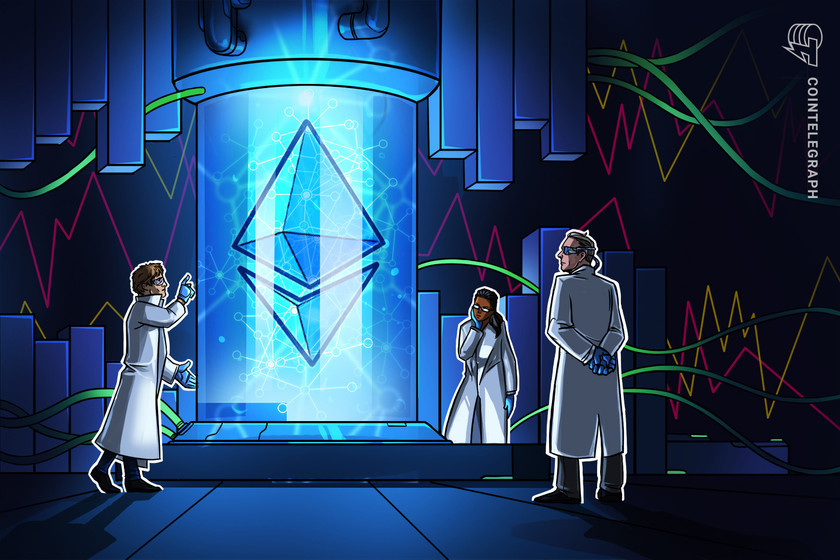Ethereum-scaling protocol zkSync’s layer-3 prototype set for testing in 2023


Matter Labs chief product officer Steve Newcomb emphasized to Cointelegraph that the launch of its L3 prototype will significantly improve the performance of its L2 solution.
A new layer-3 prototype aimed at further solving Ethereum’s scalability issues is set to be deployed for testing as soon as Q1 2023.
zkSync, a provider of zero-knowledge blockchain solutions, on Oct. 10, announced it is aiming to deploy a new EVM-compatible layer-3 prototype called “Pathfinder” on testnet early next year.
zkSync is an L2 Ethereum scaling protocol designed to bring down network usage costs. It launched a 1.0 version back in June 2020 and is now gearing up for the launch of zkSync 2.0 later this month.
In its most recent blog post, the team explained that the L3 Pathfinder will be a “prototype demonstrating a ZK rollup as a fractal Hyperchain in Layer 3.” It will use recursive scaling.
“It will serve as a foundation for public experimentation, research, and development of Layer 3,” the post read.
With 18 days to zkSync 2.0 on mainnet, we’re thrilled to share another exciting milestone on the horizon: zkSync’s Layer 3 Pathfinder will be released to the public testnet in Q1 2023.https://t.co/7HnibHn2dX
(1/6)
— zkSync (@zksync) October 10, 2022
They stated that while layer 2 will see a 10X–100X performance increase, ”in Layer 3 performance is limitless.”
The zkSync team has outlined that it is aiming to build an L3 “ecosystem of customizable and trustlessly linked blockchains powered by zkEVM that we refer to as ‘HyperChains.’”
The team is touting that its L3 prototype will provide a series of opportunities to significantly improve different areas of blockchain performance such as scaling, customization and security.
It also adds to zkSync’s upcoming Ethereum Virtual Machine (EVM)-compatible L2 network (version 2.0), which is slated to launch on Oct. 28.
Speaking with Cointelegraph, Steve Newcomb, the chief product officer of Matter Labs — the engineering team behind zkSync — said that the team is eyeing some serious scalability with its L3 solution:
“[Our] L2 solution is going to be 10x to 100x at the max at L2, but it’s L3 where we have like a star cluster of 10x moments where we make it faster, cheaper and more usable.”
“That’s where the game is going to be had [L3] and you know, the reason why people should see us differently than Polygon really is all about by the time they get around to getting that L2 solution, which is much less performant than us,” he added.
Newcomb noted that after zkSyncs L2 mainnet launches later this month, there will be a testing period of roughly a month before the decentralized applications (DApps) launch. The team expects there to be around 150 projects ready at launch.
Related: Ethereum co-founder Vitalik Buterin shares vision for layer-3 protocols
In terms of the L3 solution adding to the L2, zkSync has noted that the team is looking to “aggressively experiment” with it to ascertain its supposed performance-enhancing potential.
The five key areas the project is looking at is performance, cost, ease of use and composability.
“Developers will be able to choose from 3 data availability options all using the same proving infrastructure for their project. Developers can choose their own trade-offs between price, performance, and security,” the post reads.






